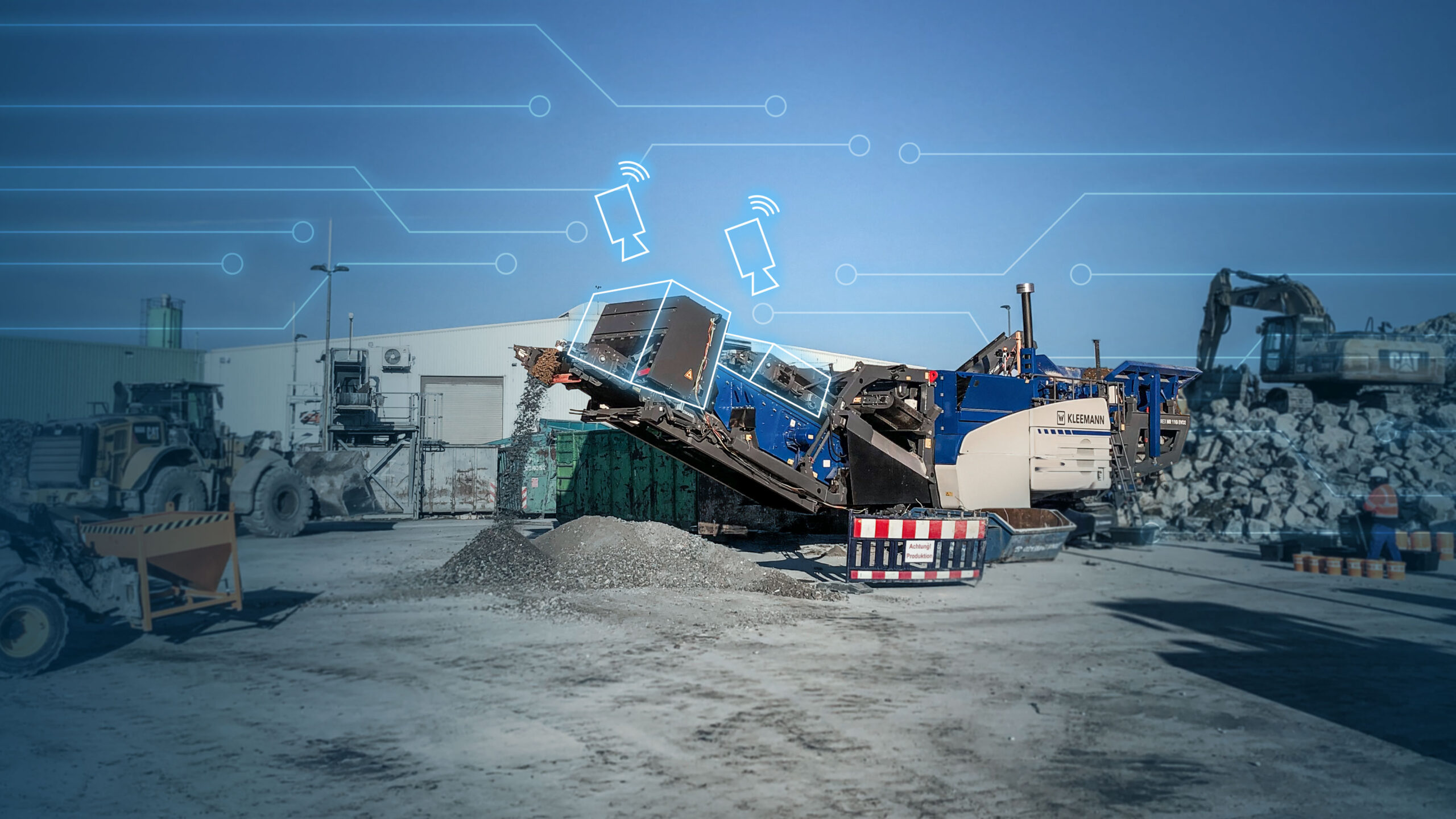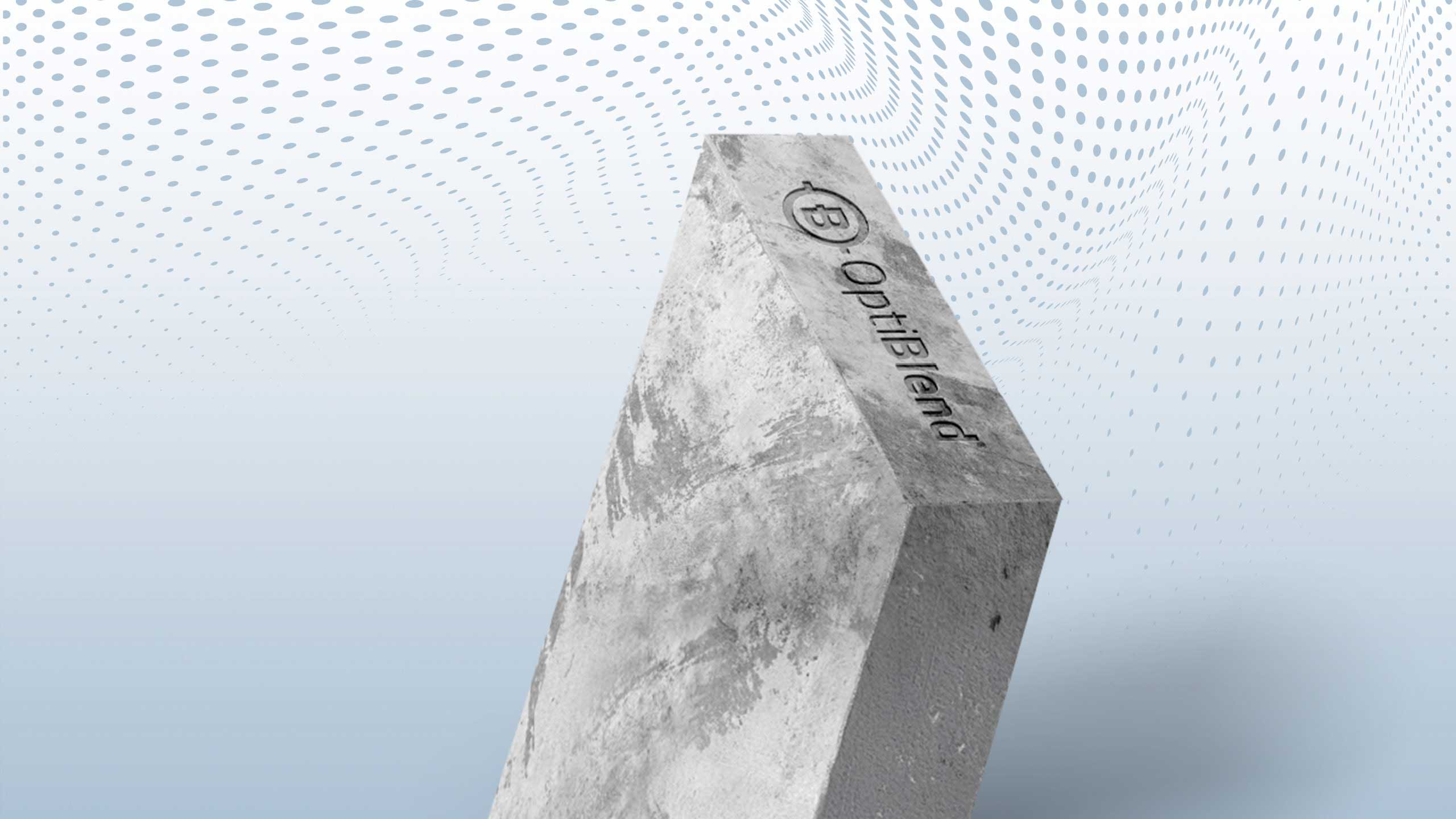The objective
According to the current state of the art, the grain size distribution of recycled aggregates is determined on a regular basis by manual sampling and analysis. KIMBA aims to further develop two applications based on artificial intelligence and test their feasibility on an industrial scale, enabling complete automation of the process: a quality management system that continuously records the grain size distribution and an AI-based assistance system for adaptive control of the process. A time frame of two years was scheduled for implementation under the consortium leadership of MAV Krefeld GmbH, consisting of a total of seven work packages.
KIMBA is the German acronym for AI-based monitoring of the grain size distribution of construction and demolition waste. KIMBA is funded as part of the Digital GreenTech initiative – Environmental Technology Meets Digitalization – of the German Federal Ministry of Education and Research. Under funding number 02WDG1963A, the project with the official title “AI-based process control and automated quality management in the recycling of construction and demolition waste through sensor-based inline monitoring of grain size distributions” is receiving €1.2 million in funding.
State of the art
Grain size distribution (GSD) is a decisive technical quality characteristic of the structural properties of mineral materials. Monitoring this is an integral part of regular quality control. A screening tower consisting of several trays with decreasing mesh sizes is used for determination. Grains smaller than the mesh size fall onto the next tray. The grain size distribution is determined by weighing the material remaining on each tray.
The scientific approach
In order to reduce the time and cost of sieve analyses and to be able to react to quality fluctuations at an early stage, sensor-based monitoring is to be carried out directly in the facility. Imaging sensor technology is used to measure the recycled material during processing. Deep learning algorithms are used to segment the material into individual particles, predict their grain size, and aggregate them into a digital GSD.
Prior to KIMBA, the Institute for Anthropogenic Material Cycles (ANTS) at RWTH Aachen University had already conducted a study investigating sensor-based prediction of GSD on a laboratory scale. Since existing methods cannot be directly transferred to different mineral raw materials, KIMBA aims to close the gap for secondary raw materials with its practical approach.
Greater acceptance through transparency: Continuous analysis strengthens confidence in the quality of recycled aggregates.
The large scale test
A mobile crusher from KLEEMANN was used for the large-scale trial, and the tests were carried out at MAV in Krefeld on construction waste ranging in size from 40 to 800 mm. In the mobile processing plant, the construction waste is crushed in an impact crusher, exposed metals are removed with an overband magnetic separator, and the remaining minerals are screened at 40 mm. The oversize material is freed of impurities by a wind sifter and then fed back into the crusher.
As a technical innovation, the KLEEMANN impact crusher was equipped with inline 3DLT sensors that monitor the product quality of the recycled material and can adaptively parametrise the crushing process. An housing was installed to integrate the additional sensor technology, allowing the positions of the sensors to be varied during the course of the project.

Impact crusher used, including possible sensor positions for KIMBA (graphic: © KLEEMANN GmbH)
Avoid faulty batches thanks to real-time control: Adjustments are made immediately during operation, reducing the number of incorrect grain lines.
The evaluation
The project was launched in September 2023. Since the completion of the large-scale trial in the summer of this year, the data is being evaluated and the degree of correlation between the prediction and the actual grain size distribution is being determined. After all data has been exchanged between the participating partners, the final report is expected in early December 2025.
Consistent quality despite fluctuating inputs: Input fluctuations are compensated for, ensuring that material quality remains consistently high.
The consortium partners
From a business perspective, the project is supported by three companies:
- MAV Krefeld GmbH (consortium leader)
- KLEEMANN GmbH
- Point 8 GmbH
The following partners are contributing from the scientific side:
- Institute for Anthropogenic Material Cycles at RWTH Aachen University (ANTS)
- Augmented Vision, German Research Center for Artificial Intelligence (DFKI)
- Chair of International Production Engineering and Management, University of Siegen (IPEM)
The project is supported by associate partners vero – the German Construction Materials Association – and the German Mechanical Engineering Industry Association (VDMA).
Three central advantages of KIMBA
The large-scale trial in Krefeld aims to demonstrate how digital sensor technology can significantly change the processing of recycled aggregates. Continuous analysis creates greater transparency and thus trust, automated controls ensure stable processes without delays, and fluctuations in the input material can be effectively compensated for. KIMBA intends to provide a clear path for improving efficiency and quality in building material recycling with the help of AI.






